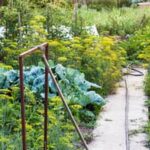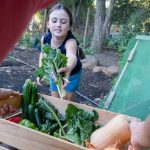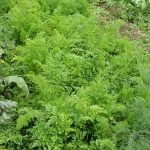Are you a first-time gardener looking to start your own vegetable garden? Gardening can be a rewarding and fulfilling hobby, providing not only fresh and healthy produce but also a sense of accomplishment and connection to nature. In this article, we will explore the best vegetables to plant for first-time gardeners, as well as provide essential tips and guidance to ensure a successful gardening experience.
For beginners, choosing the right vegetables to plant is crucial for building confidence and achieving a fruitful harvest. With the right selection of easy-to-grow vegetables, even those with little gardening experience can enjoy the satisfaction of growing their own food. Understanding which vegetables are best suited for beginner gardeners can make all the difference in turning your gardening aspirations into a thriving reality.
In the following sections, we will discuss how to plan your first garden by considering climate and location, outline essential gardening tools for first-time gardeners, delve into soil health and fertilization, and provide guidance on caring for your vegetable garden. Additionally, we will address troubleshooting common issues that may arise for beginners.
Whether you have limited outdoor space or are simply eager to get started on your gardening journey, this article will equip you with the information you need to grow a successful vegetable garden as a first-time gardener.
Planning Your First Garden
When planning your first garden, it is essential to understand your climate and choose the right location for your vegetable patch. Depending on where you live, the climate and weather conditions can greatly affect the success of your garden. Understanding these factors will help you select the best vegetables to plant for first-time gardener in your area.
Understanding Your Climate
Before you start planting, take some time to research and understand the climate of your region. Are you in a warm or cool climate? Do you experience heavy rainfall or drought conditions? Knowing this information will help you select vegetables that are well-suited to your specific climate. For example, if you live in a cooler climate, you may want to consider planting cold-tolerant vegetables such as lettuce, broccoli, and carrots.
Choosing the Right Location
Once you have a good grasp of your climate, it’s time to choose the right location for your garden. Look for an area in your yard that receives adequate sunlight throughout the day.
Most vegetables require at least 6 hours of sunlight to thrive, so it’s important to pick a spot that gets plenty of sun exposure. Additionally, make sure the location has good drainage to prevent waterlogging, which can lead to root rot and other problems for your plants.
Best Vegetables for Beginners
Based on your climate and chosen location, there are several easy-to-grow options that are ideal for first-time gardeners. Some of the best vegetables to plant for first-time gardener include tomatoes, zucchini, green beans, and peppers.
These vegetables are relatively low-maintenance and can produce a bountiful harvest with proper care and attention. Additionally, herbs such as basil and mint are also great choices for beginners as they are forgiving and can be easily grown in small spaces like containers or raised beds.
By understanding your climate and choosing the right location for your garden, you can set yourself up for success as a first-time gardener. With these considerations in mind, selecting the best vegetables to plant based on your specific conditions will increase the likelihood of a successful first harvest.
Essential Gardening Tools for First-Time Gardeners
When starting your journey as a first-time gardener, it is essential to have the right tools at your disposal. Investing in the proper gardening tools will not only make the process more efficient but also more enjoyable. Here are some essential gardening tools that every beginner should have in their arsenal.
Hand Trowel and Transplanting Spade
A hand trowel is a small handheld tool that is perfect for digging small holes for planting seeds or seedlings. It is also useful for transplanting small plants from pots to the garden bed. A transplanting spade, on the other hand, has a long, narrow blade that makes it easy to dig deep holes without disturbing nearby plants.
Garden Hoe and Rake
A garden hoe is great for breaking up soil, removing weeds, and shaping planting rows. It’s an essential tool for preparing your garden bed before planting. A rake, on the other hand, is useful for leveling the soil surface and gathering debris such as leaves or grass clippings.
Watering Can or Hose
Proper watering is crucial for the success of your vegetable garden. A good-quality watering can or hose with an adjustable nozzle will allow you to deliver water exactly where it’s needed-directly to the base of your plants.
Garden Gloves and Knee Pads
Protecting your hands with gloves while gardening can prevent blisters and protect you from thorns or sharp objects in the soil. Additionally, using knee pads will provide cushioning and protect your knees when kneeling or stooping while working in the garden.
By having these essential gardening tools on hand, you’ll be well-prepared to tackle your first vegetable garden with confidence. With these tools at your disposal, you’ll be well on your way to growing a successful harvest of some of the best vegetables to plant for first-time gardeners.
Best Vegetables for Beginners
Starting a vegetable garden as a first-time gardener can be an exciting and rewarding experience. It’s important to choose the right vegetables to plant, especially ones that are easy to grow and maintain. Whether you have limited space in your backyard or plan on using pots and containers, there are plenty of options that will suit your needs. In this section, we will discuss some of the best vegetables to plant for first-time gardeners.
One of the best vegetables for beginners is lettuce. Lettuce is relatively low-maintenance and can be grown in small spaces or containers. It also has a short growing season, making it a great option for those who want to see results quickly.
Another great option is tomatoes, which are versatile and can be grown in beds or even hanging baskets. They do require regular watering and support as they grow, but the effort is well worth it when you get to enjoy homegrown tomatoes.
Carrots are another excellent choice for first-time gardeners. They prefer loose soil with good drainage, making them ideal for raised beds or containers. Radishes are also easy to grow and have a fast turnaround time from sowing to harvest. Additionally, green beans, zucchini, and bell peppers are all beginner-friendly vegetables that can thrive in various growing conditions.
Overall, the key to a successful first harvest is choosing vegetables that match your gardening skills and available resources. With proper planning and care, you can enjoy a bountiful harvest of fresh produce that you grew yourself.
| Vegetable | Growing Difficulty |
|---|---|
| Lettuce | Easy |
| Tomatoes | Moderate |
| Carrots | Easy |
Understanding the Importance of Soil and Proper Fertilization
When starting a vegetable garden for the first time, it’s crucial to understand the importance of soil and proper fertilization in order to ensure a successful harvest. The right type of soil can make all the difference in the growth and health of your plants, so it’s important to choose wisely. One of the best types of soil for vegetable gardening is loamy soil, which has a good balance of sand, silt, and clay.
In addition to selecting the right type of soil, it’s also essential to properly fertilize your garden. Organic matter, such as compost, is one of the best ways to improve soil quality and provide essential nutrients for your vegetables. Compost can be easily made at home from kitchen scraps and yard waste, making it an affordable and eco-friendly option for first-time gardeners.
In order to effectively manage the health and fertility of your garden soil, consider implementing a regular schedule for adding compost or organic fertilizer. This will help maintain a rich and balanced soil structure that is conducive to healthy plant growth. By understanding the importance of soil and proper fertilization, you’ll set yourself up for a successful first harvest as a new gardener.
- Loamy Soil
- Compost
- Organic Fertilizer
Caring for Your Vegetable Garden
As a first-time gardener, caring for your vegetable garden is crucial to ensure a successful harvest. Proper watering, weeding, and pest control are essential tasks that will contribute to the health and productivity of your plants.
When it comes to watering your vegetable garden, the best practice is to water deeply but infrequently. Depending on the climate and soil type in your area, most vegetables require about 1-1.5 inches of water per week. However, it’s important to adjust this amount based on weather conditions and the specific needs of different vegetables.
Weeding is another important aspect of caring for your vegetable garden. Weeds compete with your vegetables for nutrients and water, so it’s crucial to keep them in check. The best way to prevent weed growth is by regularly cultivating the soil and applying mulch to suppress weed growth. For those concerned about the use of herbicides or chemicals in their garden can also consider hand-weeding or using natural weed control methods.
In addition to watering and weeding, pest control is also a key part of maintaining a healthy vegetable garden. Common garden pests such as aphids, caterpillars, and beetles can wreak havoc on your plants if left unchecked. There are several organic options for controlling pests in your vegetable garden including insecticidal soaps, neem oil, companion planting with pest-repelling herbs or flowers, and attracting beneficial insects that prey on harmful pests.
| Vegetable | Easy-to-Grow Tips |
|---|---|
| Tomatoes | Choose disease-resistant varieties; provide support for vines as they grow. |
| Carrots | Loosen soil before planting; keep consistently moist but not waterlogged. |
| Lettuce | Plant in cool weather; provide shade in hot climates to prevent bolting. |
Harvesting and Enjoying the Fruits of Your Labor
After weeks of planting, watering, and tending to your vegetable garden, the time has finally come to harvest the fruits of your labor. There is no better feeling for a first-time gardener than seeing the results of their hard work and dedication. Whether you have grown tomatoes, cucumbers, carrots, or lettuce, the satisfaction of picking fresh produce from your own garden is incomparable.
To ensure that you are harvesting your vegetables at the right time for peak flavor and nutrition, it’s essential to familiarize yourself with each plant’s specific harvesting requirements. Some vegetables are best when picked early and consumed immediately, while others can be stored for later use. Here are some common vegetables for first-time gardeners and their recommended harvesting techniques:
- Tomatoes: Harvest when they are firm and fully colored.
- Cucumbers: Pick when they are dark green and firm, before they turn yellow.
- Carrots: Pull them up gently when they reach the desired size; do not leave them in the ground for too long as they may become woody.
- Lettuce: Cut the leaves from the outer part of the plant as needed; avoid letting them bolt (produce flowers) as this can make the leaves bitter.
Once you have gathered your bountiful harvest, it’s time to savor the flavors of your homegrown vegetables. From preparing a fresh salad with lettuce and tomatoes to pickling cucumbers for future enjoyment, there are countless ways to incorporate your homegrown produce into delicious meals. Not only will you appreciate the superior taste of freshly harvested vegetables, but you will also take pride in knowing that they were cultivated through your own efforts.
While it may be tempting to harvest all of your vegetables at once, remember that some plants can continue producing if harvested regularly. With proper care and attention to harvesting techniques, you can enjoy a steady supply of fresh vegetables throughout the growing season – an immensely rewarding experience for any first-time gardener.
Troubleshooting Common Issues for First-Time Gardeners
Dealing with plant diseases and other challenges can be a daunting task for first-time gardeners. However, with the right knowledge and preparation, it is possible to prevent and address these issues effectively. One of the best ways to avoid plant diseases is to choose disease-resistant vegetable varieties when planning your garden. This can greatly reduce the risk of encountering common plant diseases and make your gardening experience more enjoyable.
In addition to choosing disease-resistant varieties, it’s important to practice good garden hygiene. This includes keeping your tools clean, rotating crops, and removing any diseased plants as soon as you notice them. Proper spacing between plants can also help improve air circulation, reducing the risk of fungal diseases. By being proactive in maintaining a healthy garden environment, you can minimize the chances of encountering plant diseases.
Aside from plant diseases, first-time gardeners may also face challenges such as nutrient deficiencies, pest infestations, and environmental stressors. To address these issues, it’s essential to regularly monitor your plants for any signs of distress or damage. Additionally, familiarize yourself with organic pest control methods and natural fertilization techniques to maintain a healthy garden ecosystem without the use of harmful chemicals.
By being attentive and proactive in addressing potential challenges, first-time gardeners can overcome common issues and continue their gardening journey successfully. Just remember that every challenge presents an opportunity to learn and improve your gardening skills for future seasons. With patience and dedication, you can cultivate a thriving vegetable garden and enjoy a bountiful harvest of fresh produce.
Conclusion
In conclusion, gardening can be a rewarding and satisfying hobby for first-time gardeners. The joy of watching your vegetables grow from seedlings to mature plants is an experience like no other. With the right planning, tools, and knowledge, you can easily set yourself up for a successful harvest.
As a first-time gardener, it’s important to choose the best vegetables to plant for your initial experience. Some of the best options for beginners include tomatoes, zucchini, lettuce, and peppers. These vegetables are relatively easy to grow and are perfect for those just starting out in gardening. By selecting the right vegetables, you can increase your chances of a successful harvest and build confidence in your gardening skills.
For those who are new to gardening, it’s essential to remember that mistakes will happen along the way. It’s all part of the learning process. Don’t get discouraged if things don’t go as planned – use these challenges as opportunities to learn and improve.
Gardening is a journey, and with time and dedication, you will continue to develop your skills and see even greater success in the future. Keep learning new techniques, experimenting with different varieties, and most importantly, have fun with your gardening journey.
Frequently Asked Questions
What Vegetables Are Best for Beginner Gardeners?
For beginner gardeners, it’s best to start with easy-to-grow vegetables like lettuce, radishes, and carrots. These vegetables require minimal maintenance and are perfect for those who are just starting to explore gardening.
What Are the Easiest Vegetables to Grow for Beginners?
The easiest vegetables to grow for beginners include tomatoes, zucchini, and bell peppers. These plants are relatively low-maintenance and can thrive in different types of soil and climate conditions, making them ideal for those new to gardening.
What Should I Grow in My First Vegetable Garden?
In your first vegetable garden, consider growing a mix of leafy greens like spinach and kale, along with root vegetables such as onions and potatoes. Herbs like basil and parsley also make great additions to a beginner’s garden due to their ease of cultivation and multiple uses in cooking.

If you’re looking to get into vegetable gardening, or are just looking for some tips on how to make your current garden better, then you’ve come to the right place! My name is Ethel and I have been gardening for years. In this blog, I’m going to share with you some of my best tips on how to create a successful vegetable garden.





